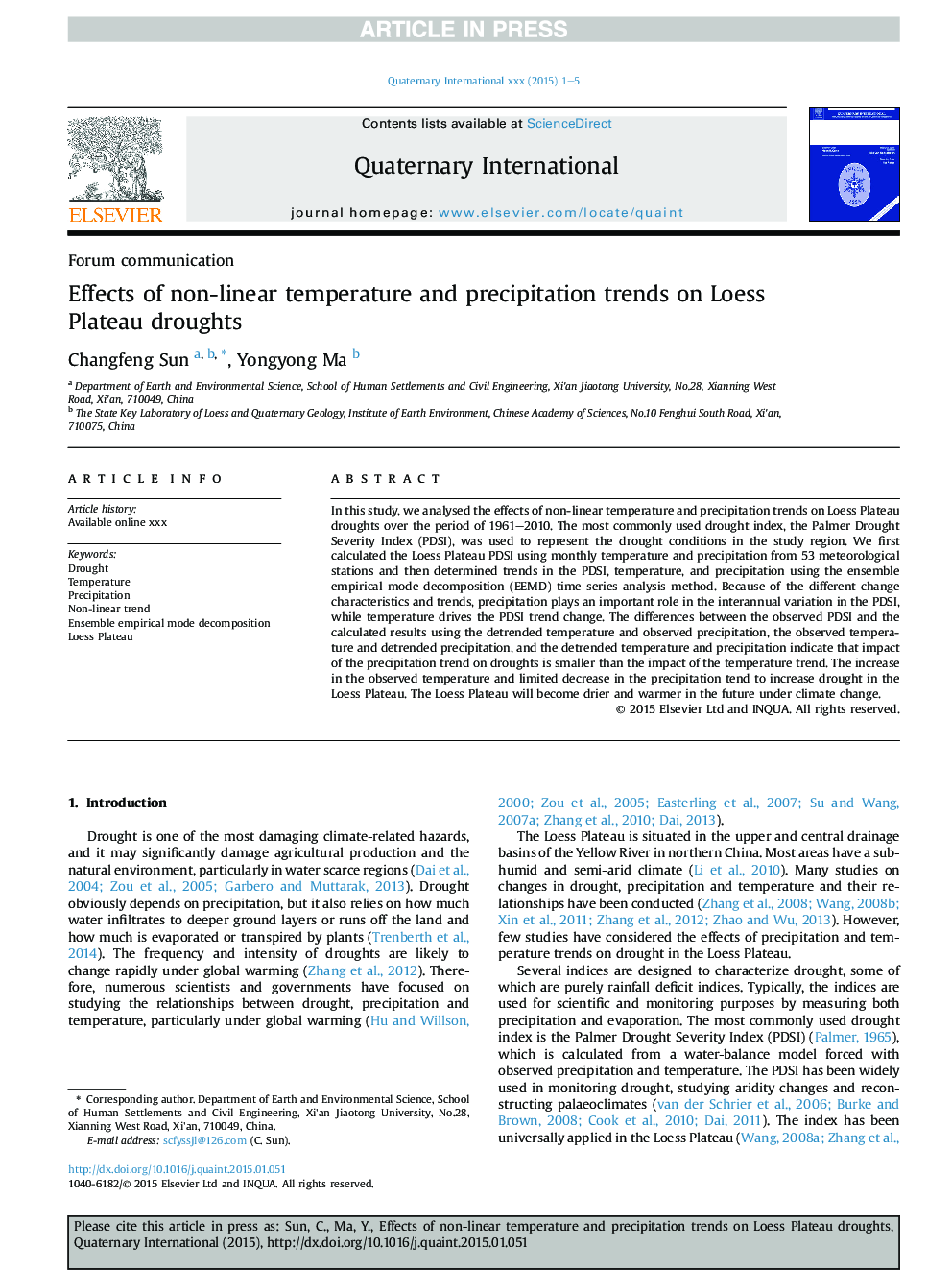| Article ID | Journal | Published Year | Pages | File Type |
|---|---|---|---|---|
| 7451734 | Quaternary International | 2015 | 5 Pages |
Abstract
In this study, we analysed the effects of non-linear temperature and precipitation trends on Loess Plateau droughts over the period of 1961-2010. The most commonly used drought index, the Palmer Drought Severity Index (PDSI), was used to represent the drought conditions in the study region. We first calculated the Loess Plateau PDSI using monthly temperature and precipitation from 53 meteorological stations and then determined trends in the PDSI, temperature, and precipitation using the ensemble empirical mode decomposition (EEMD) time series analysis method. Because of the different change characteristics and trends, precipitation plays an important role in the interannual variation in the PDSI, while temperature drives the PDSI trend change. The differences between the observed PDSI and the calculated results using the detrended temperature and observed precipitation, the observed temperature and detrended precipitation, and the detrended temperature and precipitation indicate that impact of the precipitation trend on droughts is smaller than the impact of the temperature trend. The increase in the observed temperature and limited decrease in the precipitation tend to increase drought in the Loess Plateau. The Loess Plateau will become drier and warmer in the future under climate change.
Related Topics
Physical Sciences and Engineering
Earth and Planetary Sciences
Geology
Authors
Changfeng Sun, Yongyong Ma,
